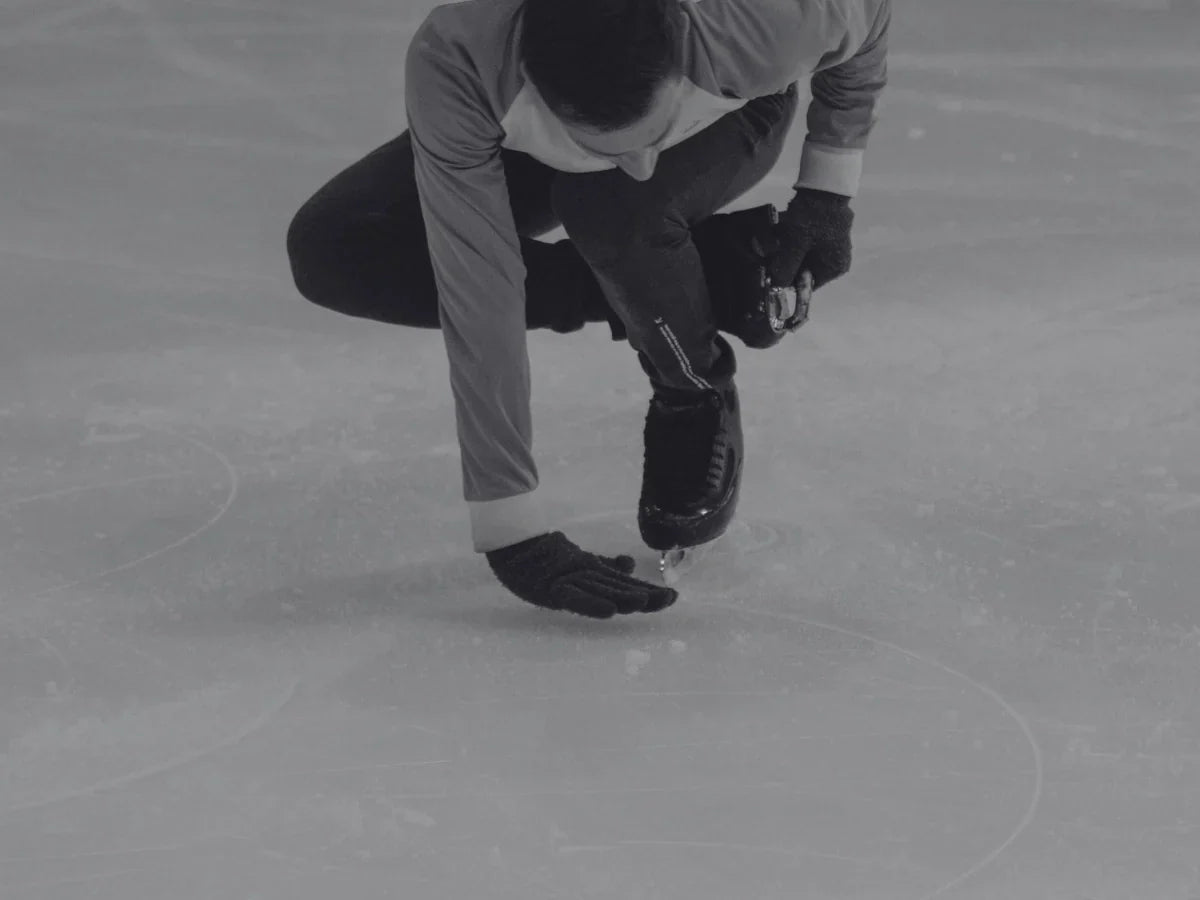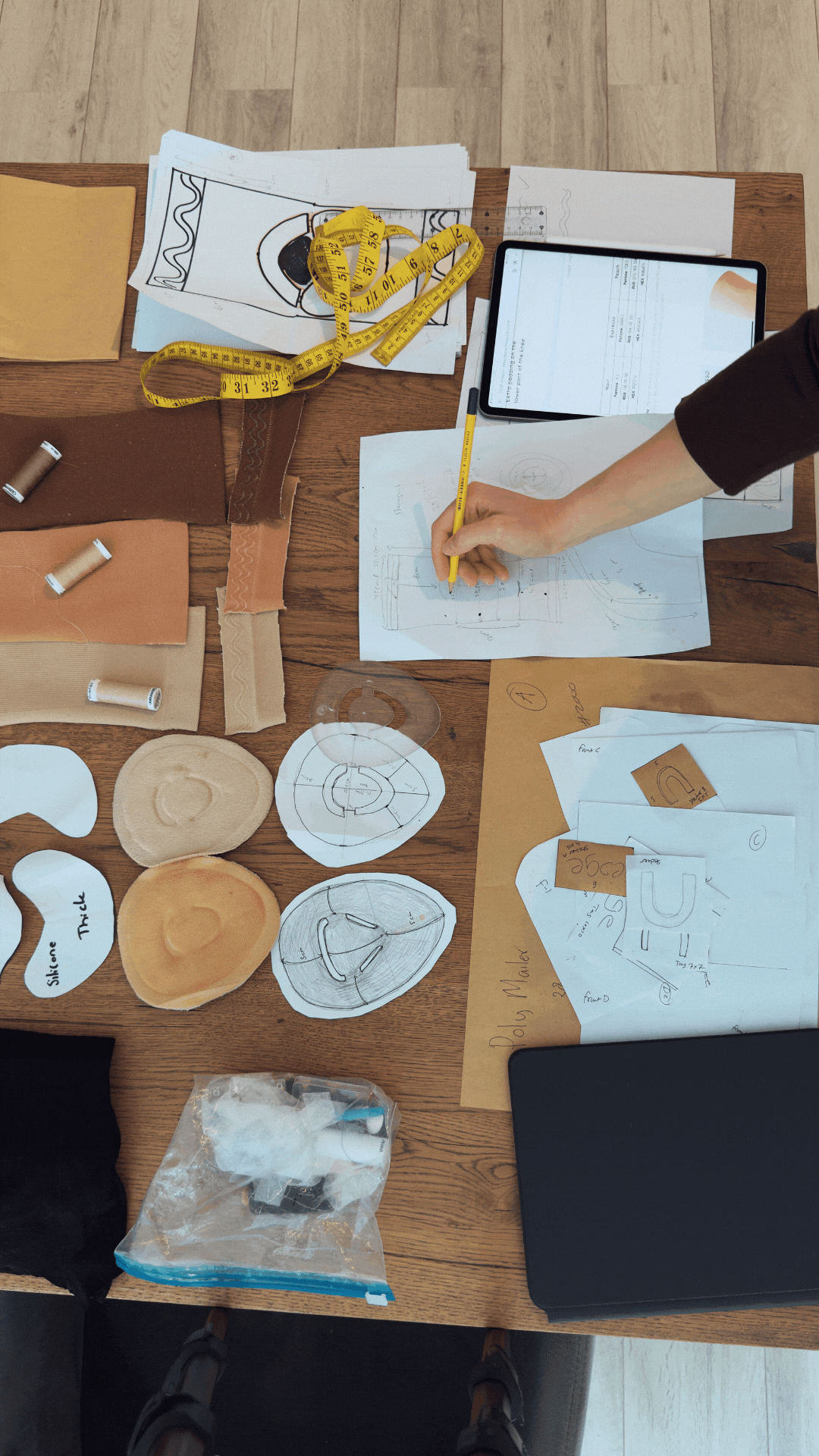Article: The Essential Guide to Protective Gear for Figure Skaters

The Essential Guide to Protective Gear for Figure Skaters
Figure skating is a powerful mix of athleticism and artistry. But behind the beauty is repetition, impact, and risk. Every fall, spin, and slide takes a toll on your body. Skaters often invest in good skates but overlook something just as important, protection.
Whether you skate recreationally or competitively, the right protection can help you skate longer, train harder, and recover faster. This guide explains what gear matters, why it matters, and how it helps.
Hand Protection — More Than Just for Warmth
Most skaters wear gloves, but not all understand why. It’s not just about keeping your hands warm.
Ice burns and cold exposure
Direct skin contact with ice can cause what’s known as an ice burn. The moisture on your skin freezes almost instantly, damaging the surface layer. Over time or with repeated exposure, this can lead to cracked, red, irritated skin. If the exposure is long enough, it can cause early-stage frostbite, especially in the fingertips.
Cuts from the ice surface
Ice may look smooth, but it's full of small chips and scratches, especially after multiple sessions. Falling or sliding across it with bare hands can cause scrapes or small cuts that become painful when repeated.
Blade contact during advanced positions
Skaters often touch their own blades in moves like the Biellmann or catch-foot spins. Without gloves, there’s a real risk of cutting your fingers on the sharpened edges. A glove adds just enough barrier to keep your hands protected while still allowing control.
Feet Protection — Pressure Relief Where Boots Dig In
Falling is part of skating. But repeated impact on your hips or tailbone is more than just uncomfortable. It can lead to deep bruising, joint pain, or even fractures.
Fall pants are made with built-in padding that absorbs impact without restricting your movement. They protect key areas like the hips and lower spine while still allowing full mobility. Whether you are working on new jumps or just starting out, this gear helps you train with confidence.
Fall Pants — Impact Protection for Hips and Tailbone
It’s not just the friction you have to worry about. Ice isn’t always a perfectly smooth surface. One small bump or rough patch can be enough to cause a more serious injury, like a fractured kneecap if you slide your knee over a bump on the ice. It’s a risk that a lot of skaters don’t always think about, but it is absolutely a reason to keep those knees covered.
Clothing — Your First Barrier Against Ice
What you wear on the ice matters more than people think. Clothing is your first layer of protection, especially for your legs, the area most exposed to slides, falls, and choreo on the ice.
Wearing tights, leggings, or training pants helps prevent:
- Ice burns from direct skin contact
- Scrapes from rough patches or chips
- Irritation during knee slides or low movements
The same goes for your upper body. Long sleeves or fitted tops can protect against cold surface contact and reduce skin irritation.
Even a thin layer makes a difference. Skating clothes are not just about looks. They help protect your skin so you can move comfortably and safely.
Knee Protection — For the Joint That Absorbs the Most
Knees often take the most impact in skating. Slides, falls, and low choreography usually land on the same area again and again. Over time, this repeated impact can lead to deep bruising, irritation, and swelling, especially when the joint doesn’t get a chance to recover.
When bruising turns into inflammation, even basic movements like kneeling or getting up start to hurt. Some skaters begin avoiding certain moves not because they can’t do them, but because they’ve become too painful to repeat.
Using well-placed gel knee pads can help prevent this. They reduce pressure on the joint, absorb impact, and protect the exact zones that hit the ice most.
Knee Protection — For the Joint That Absorbs the Most
Not every skater will need full-body protection, but for beginners, or anyone who prefers a bit more safety, it can make a big difference. Falls are part of learning, and in the early stages they can come unexpectedly. Wrist guards, elbow pads, and helmets can help prevent more serious injuries while you’re still building control and confidence. Wrists in particular are often the first point of contact when falling, and are vulnerable to sprains or fractures. Elbows can take hard hits too, especially during backward falls. And for younger skaters, or those still learning to balance, head protection is sometimes required.
Once a skater becomes more comfortable on the ice, this kind of protection often starts to get in the way, limiting movement, rotation, or range. But in the beginning, or when returning from injury, these small pieces of gear can offer peace of mind and reduce the risk of real damage.
Skating Smarter Starts with Protecting Your Body
Figure skating asks a lot from your body. Every jump, slide, or spin adds up, and while pain is sometimes part of the process, injury doesn’t have to be.
The right protection helps you train longer, move more freely, and focus on progress instead of recovery. Whether you're just starting out or refining your edge work, it’s worth checking in with yourself. What’s holding you back? What’s starting to hurt? And what could be prevented with the right gear
Image Credits:
Photo by Tima Miroshnichenko



